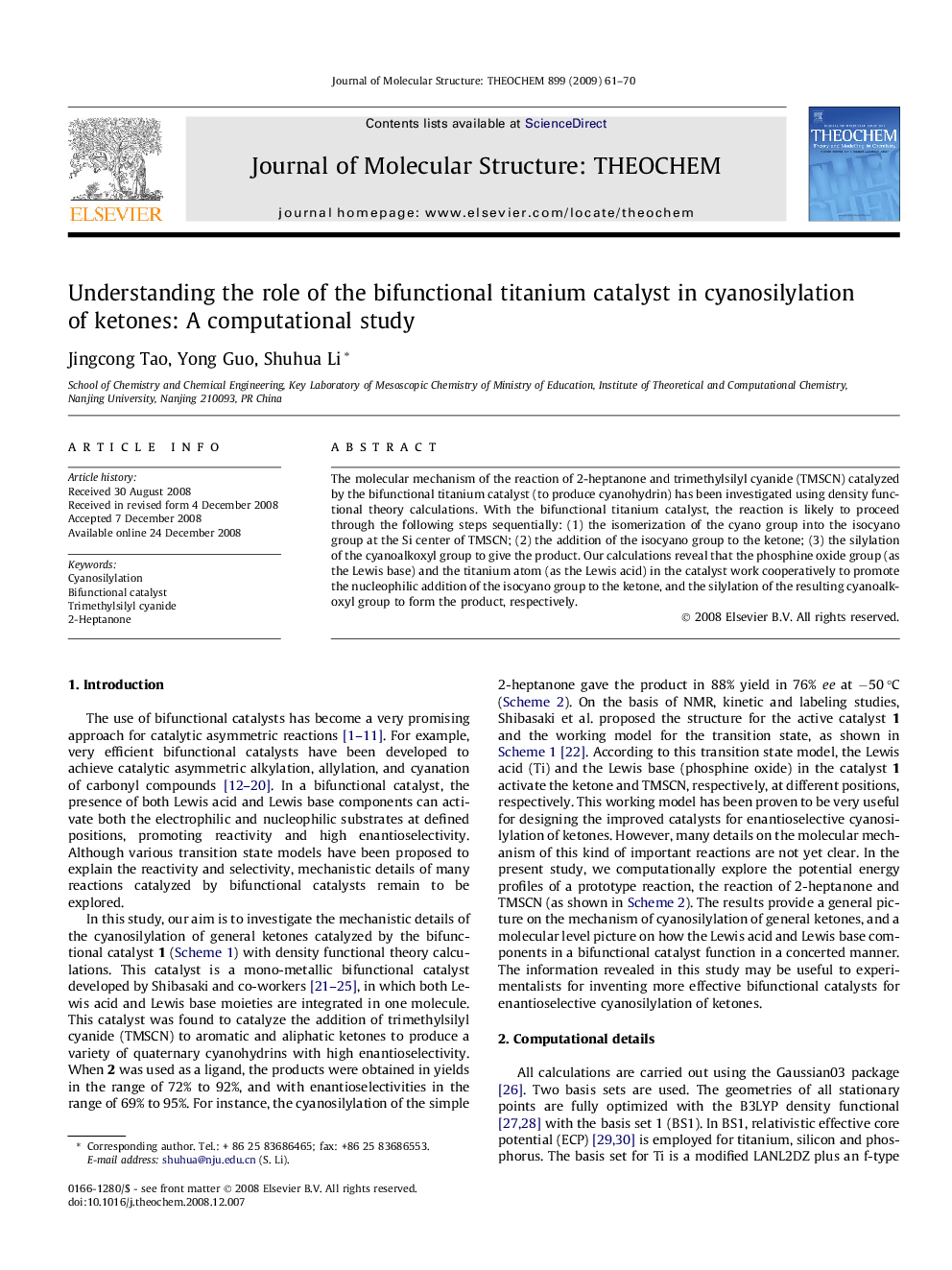| Article ID | Journal | Published Year | Pages | File Type |
|---|---|---|---|---|
| 5417511 | Journal of Molecular Structure: THEOCHEM | 2009 | 10 Pages |
Abstract
The molecular mechanism of the reaction of 2-heptanone and trimethylsilyl cyanide (TMSCN) catalyzed by the bifunctional titanium catalyst (to produce cyanohydrin) has been investigated using density functional theory calculations. With the bifunctional titanium catalyst, the reaction is likely to proceed through the following steps sequentially: (1) the isomerization of the cyano group into the isocyano group at the Si center of TMSCN; (2) the addition of the isocyano group to the ketone; (3) the silylation of the cyanoalkoxyl group to give the product. Our calculations reveal that the phosphine oxide group (as the Lewis base) and the titanium atom (as the Lewis acid) in the catalyst work cooperatively to promote the nucleophilic addition of the isocyano group to the ketone, and the silylation of the resulting cyanoalkoxyl group to form the product, respectively.
Related Topics
Physical Sciences and Engineering
Chemistry
Physical and Theoretical Chemistry
Authors
Jingcong Tao, Yong Guo, Shuhua Li,
